Watering is one of the main tasks you must execute as a plant owner as it impacts the plant’s growth and survival. While it is not the only watering method, most people prefer to water their plants by pouring water on the soil surface. But have you heard of or do you know how to bottom water plants?
Bottom watering involves watering your plants from the bottom. The method helps strengthen plant roots. You can water your plants from the bottom by filling a container with water and placing your planter inside. The potting soil will absorb the water in the container from the bottom.
Watering your plants from the bottom ensures that the roots receive sufficient moisture. It also gives them room to breathe without drowning in excess water. Read the rest of this post to learn the right way to water your plants from the bottom.
What Does Bottom Watering Plants Mean?
Bottom watering is where you water your plants from the bottom of their soil instead of watering from the top or on the surface of the soil. The method includes placing your potted plant inside a container with water so it absorbs the water from the bottom. The goal is to allow the plant roots to receive enough water that helps them develop quickly. It also protects plant roots from rotting by not drowning them in excess moisture, which is the case with traditional watering.
How To Water A Plant From The Bottom: The Right Steps
Learning how to bottom water plants makes it easy to enjoy the benefits. For instance, you will save time and effort as your plant absorbs moisture slowly and efficiently. It will also allow your plants a healthier environment to thrive. The key is doing it correctly. Bottom watering is not as complex a technique as it sounds. Here are some steps to see you through when watering your plants.
Step 1: Assess the Soil
The first and one of the vital things you should do is assess your soil to determine whether it is the right time for bottom watering. One of the keys to efficient bottom watering is timing. Evaluating the soil will help you with perfect timing. You can do this by pushing your finger into the soil between the wall of the pot and the plant’s stem. If your finger goes down to the second knuckle without feeling moisture in the soil, it is time for watering.
Step 2: Fill A Container With Water
The next step is filling a container with water. Firstly, you must ensure the container is large enough to place your potted plant inside without unpotting it. Secondly, do not fill it up to the brim. Instead, fill it halfway. Lastly, ensure that the water is either distilled or filtered and not tap water packed with chlorine.
Step 3: Place The Potted Plant Inside The Container
After filling the container with water, the next step is to place your potted plant inside. Make sure the pot has a hole at the bottom for the soil to absorb the water.
Step 4: Leave It In For A Few Minutes
Once the pot is inside the container, leave it alone for about ten minutes. Afterward, check the moisture level in the container to see if the plant potting soil has absorbed enough water. Be careful not to overwater the soil to prevent your roots from drowning and developing root rot. If the soil’s top surface is still dry, leave it for a few more minutes.
Step 5: Remove Excess Water
Once the soil is uniformly moist, remove the excess water from the container to prevent more absorption by the soil. After that, leave your plant alone and do not water it again for a few days. Repeat this process after a week or so, depending on the result of the previous bottom watering.
Effective Tips And Techniques For Bottom Watering Plants
Even with the right steps, some people still make dire mistakes when bottom watering plants. You will benefit if you know the effective tips and tricks. Here are some tips you should always bear in mind.
Have The Perfect Timing
Before bottom watering your plants, always check the moisture levels in the soil to ensure perfect timing. As much as your plants need water, too much of it will cause more harm than good.
Know The Absorption Time
Give your pot enough time to absorb water from the bottom. However, please do not give it too much time that the soil becomes excessively wet. Ten to twenty minutes should be enough depending on the soil’s absorption rate.
Use The Right Water
You may be tempted to use tap water on your plants. This is a big mistake as tap water contains chlorine, which is harmful to plants. Tap water results in delayed plant growth, root interference, and even wilting. Therefore, it would be wise to opt for distilled or filtered water.
Confirm The Pot’s Drainage Holes
Ensure the pot you use has enough drainage holes to allow the soil to absorb water. The number of holes will vary based on your plant’s need for water and the absorption rate. Have at least one hole on your planter and ensure there are no pebbles at the bottom to interfere with absorption.
Use The Right Watering Technique
There is more than one method for watering plants from the bottom. Choose what you find ideal and what’s convenient for you. Here are the two main techniques.
- The tub or sink method: Here, you place your potted plant in a tub or sink with water and let it sit for a few minutes. This is an ideal method for plants in larger containers.
- The floating method: In this method, you fill a bowl or container with water and place your plant inside. Your plant should be inside a plastic pot with a few drainage holes. This way, the plastic floats on the water as the soil absorbs it.
What Are Some Examples Of Bottom Feeding Plants?
Bottom watering is a great technique for small and medium-sized plants. It is also perfect for plants that feed from the bottom and those prone to conditions like root rot. Such plants include;
- Dragon tree
- Calatheas
- Fiddle leaf figs
- Pothos
- Cissus
- Spider plant
FAQs On How To Bottom Water Plants
Bottom watering is an easy and safe technique for watering your plants. Here are answers to a few more things you should know about this technique before trying it out.
What Are The Benefits Of Bottom Watering?
Bottom watering prevents overwatering and helps avoid pest infestations. It also allows plant roots to grow faster and stronger by promoting better nutrient absorption. The technique is perfect for allowing fresh air into the soil.
How Often Should You Bottom Water Plants?
Experts recommend bottom watering plants at least twice per week. However, this depends on how fast your soil starts to dry. You can determine the right bottom watering schedule for your plant by checking the soil’s moisture level with your fingers.
What Is The Best Time To Bottom Water Your Plants?
The best time for bottom watering plants is early in the morning, late in the evening, or at night. Avoid bottom watering during the day because the heat from the sun will lengthen the time it takes to soak water into the soil.
Conclusion
Bottom watering is a method of feeding water to plants by allowing the soil to absorb the water from the bottom instead of the top. It is an easy technique to execute, provided you know how to bottom water plants correctly. Now that you know the basics feel free to embrace the technique.
Victoria is the owner and main author of hobby plants. She loves spending her free time in her garden planting and taking care of her plants. Victoria hopes you enjoy the content here!
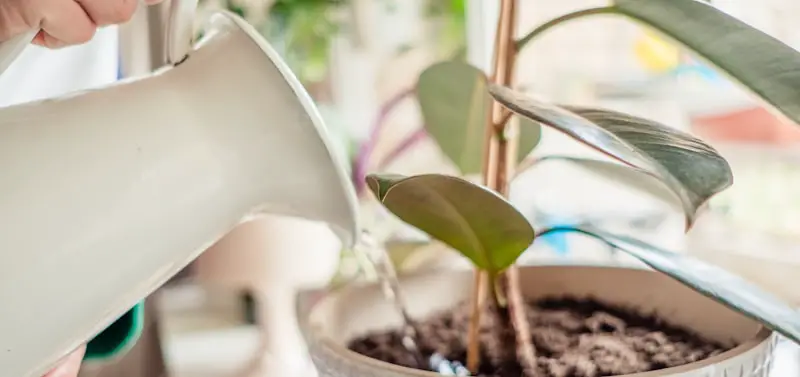
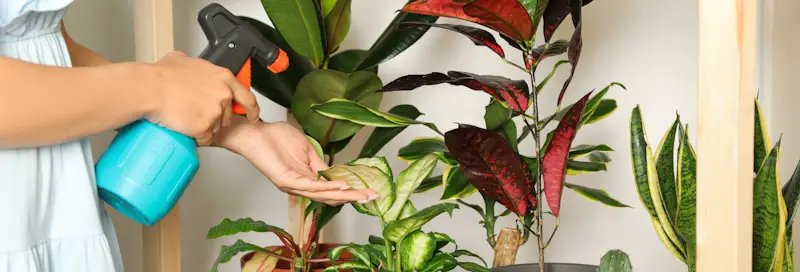
![How Often to Water Fiddle Leaf Fig? [COMPLETE GUIDE] How Often to Water Fiddle Leaf Fig? [COMPLETE GUIDE]](https://www.hobbyplants.com/wp-content/uploads/2022/06/how-often-to-water-fiddle-leaf-fig-300x158.jpg)
![How Often Should You Water Pothos? [Complete Care Guide] How Often Should You Water Pothos? [Complete Care Guide]](https://www.hobbyplants.com/wp-content/uploads/2022/07/how-often-to-water-pothos-300x158.jpg)
![How Often Do You Water A Snake Plant? [FIND OUT HERE] How Often Do You Water A Snake Plant? [FIND OUT HERE]](https://www.hobbyplants.com/wp-content/uploads/2022/07/how-often-do-you-water-a-snake-plant-1-300x158.jpg)
![How Often Should You Water Ferns? [COMPLETE CARE GUIDE] How Often Should You Water Ferns? [COMPLETE CARE GUIDE]](https://www.hobbyplants.com/wp-content/uploads/2022/08/how-often-to-water-ferns-300x158.jpg)

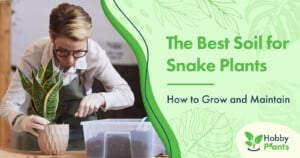

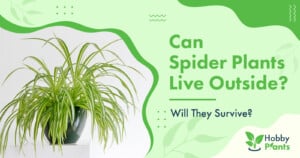
![The Best Stylish Grow Lights for Indoor Plants [REVIEWED] The Best Stylish Grow Lights for Indoor Plants [REVIEWED]](https://www.hobbyplants.com/wp-content/uploads/2022/07/stylish-grow-lights-for-indoor-plants-300x158.jpg)
![What Are The Types Of Dracaena Plants [Answered] What Are The Types Of Dracaena Plants [Answered]](https://www.hobbyplants.com/wp-content/uploads/2022/07/types-of-dracaena-plants-300x158.jpg)
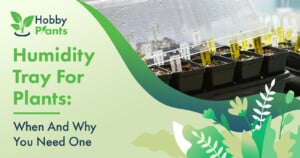
![Can Snake Plants Live Outside? [COMPLETE CARE GUIDE] Can Snake Plants Live Outside? [COMPLETE CARE GUIDE]](https://www.hobbyplants.com/wp-content/uploads/2022/08/can-snake-plants-live-outside-300x158.jpg)